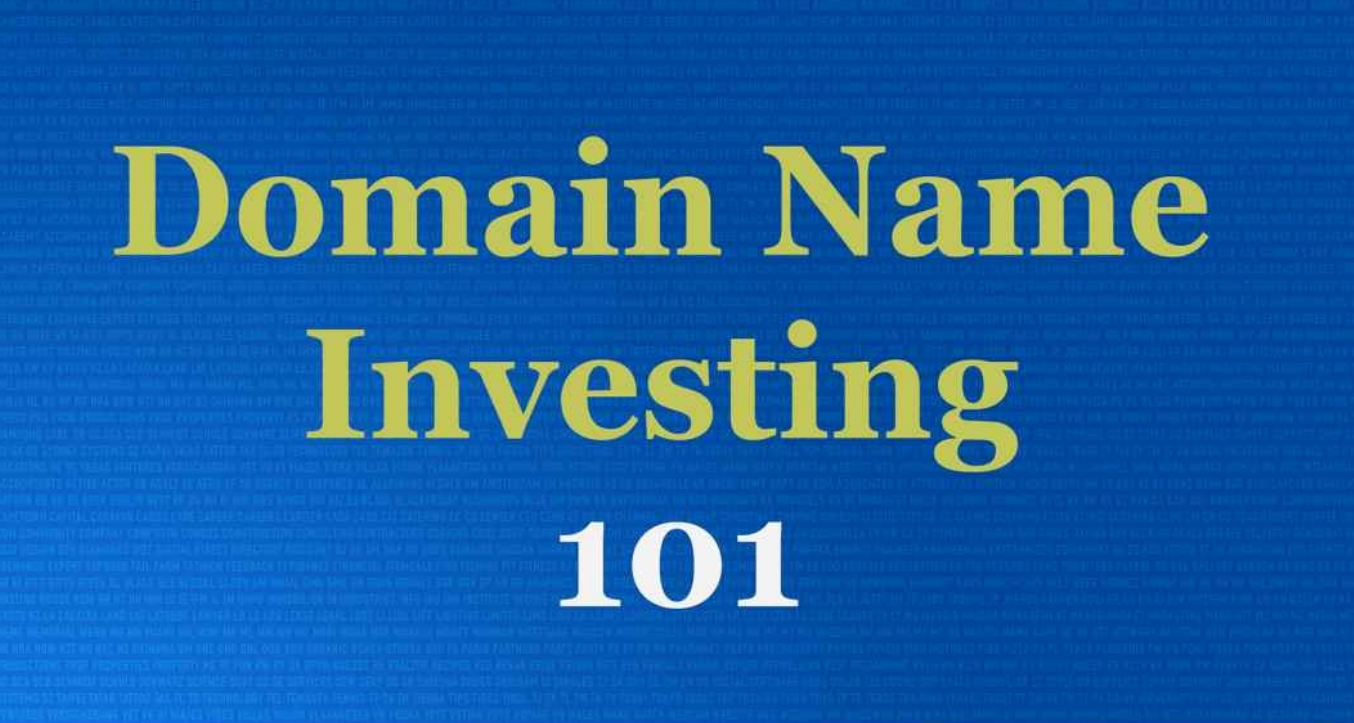How to market a domain Name

Successful Domain Marketing – Introduction
If you’ve ever wondered how to sell a domain name and make money, you’re not alone.
Domain flipping is an active and busy business, and I’m here to guide you through the nuances of how to buy and sell domain names for a profit.
When I first stumbled upon an unused domain in my portfolio, I had no idea it was a valuable domain waiting to be leveraged.
Selling domains isn’t just about listing and waiting; it’s about understanding domain authority, recognizing market demands, and positioning your domain where it can be seen by the right buyers.
Knowing the key steps in the domain-selling process can make all the difference.
Stick with me, and I’ll teach you how to transform those overlooked URLs into cash. Let’s turn your digital dust collectors into real revenue!
How to Know the Value of Your Domain
I remember when I first ventured into this area, the excitement was palpable, but so was the uncertainty.
How do you determine if a domain name is just another URL or a potential goldmine? Let’s get into what makes a domain valuable and how you can assess its marketability.
Factors That Affect Domain Value
- Length: Shorter domains are typically more valuable. They’re easier to remember, type, and brand. For instance, a domain like ‘Pets.com‘ is likely more appealing and valuable than ‘BuyAndSellPetsOnline.com.’
- Keywords: Domains that contain relevant and highly searched keywords can drive significant traffic. If you own a domain like ‘CheapFlights.com,’ you’re sitting on a potential goldmine because of the high commercial intent behind the search queries.
- Extension: The top-level domain (TLD) plays a huge role. .com domains are often considered the most desirable due to their familiarity and trustworthiness. However, other TLDs like .net, .org, or even niche extensions like .tech can also be valuable depending on the context.
- Brandability: Is the domain easy to brand? Does it sound like a trustworthy business? Domains that sound professional or have a catchy ring to them can significantly increase in value.
- Historical Use: A domain’s past can impact its value. If it’s been associated with a successful site or has a clean, reputable past, it could be more valuable.
Assess Your Domains Marketability
Assessing marketability starts with understanding the demand. You want to ensure there’s a buyer for what you’re offering.
Here’s how I go about it:
- Research Similar Domains: Look at sales of similar domains. Websites like NameBio can provide historical sale prices, which is invaluable for understanding what similar domains are fetching on the market.
- Evaluate Search Engine Performance: If your domain name contains keywords, use tools like Google’s Keyword Planner to see search volumes and competition. Higher search volumes and moderate to low competition can be a good sign of a valuable domain.
- Check for Existing Businesses: Sometimes, existing businesses might be interested in acquiring a domain that matches their brand name or offers SEO benefits. A quick search can reveal potential buyers who might be interested in your domain.
- List Your Domain: Platforms like Sedo and GoDaddy Auctions allow you to list your domain for sale. How it performs there can give you a good sense of its attractiveness to potential buyers.
Once you understand these factors and properly assess your domain’s marketability, you can position yourself to maximize your returns from a domain sale.
I’ve flipped domains myself and found that sometimes, the domains you least expect to sell for much can surprise you. Each domain is unique, and so is each sale.
Remember, selling domains is beyond making a quick buck. It’s to recognize the potential in each URL and strategically position it in the market.
How to Prepare to Sell Your Domain
When you decide it’s time to sell your domain name, a little preparation can go a long way to ensure you get the best possible price.
From my own experience, taking the time to set things up right can make the difference between a quick sale and a domain that sits lingering on the market.
Here are the steps you should follow to prepare your domain for sale effectively.
Step 1: Valuation of Your Domain
Before you even think about listing your domain for sale, you need to understand what it’s worth. This is where domain valuation becomes important.
You can use online tools like EstiBot or consult with a domain broker who can provide a professional appraisal.
Consider factors like domain length, keyword relevance, and top-level domain type, which all influence a domain’s market value.
Step 2: Transfer Essentials
Ensure your domain is ready to be transferred without any hitches.
This means checking that the domain is not locked at your current domain registrar and that privacy settings are adjusted to allow potential buyers to see who owns the domain.
Remember, transferring a domain should be straightforward—you want to assure buyers that the process will be hassle-free.
Step 3: Set Up a Professional Landing Page
Creating a professional landing page for your domain can significantly increase its attractiveness. This page should include:
- A clear, concise description of the domain.
- The benefits of owning the domain.
- Any relevant traffic statistics, if available.
- Contact information or a form for potential buyers to reach out through.
A well-designed landing page not only increases the perceived value of your domain but also makes it look more professional and trustworthy to buyers.
Step 4: Choose the Right Domain Marketplace
Listing your domain on the right platform is crucial. You can choose from popular domain marketplaces like Sedo, Flippa, or GoDaddy Auctions.
Each platform has its pros and cons, depending on the type of domain you’re selling and the audience you want to reach.
Step 5: Consider a Domain Broker
If you’re looking to sell a particularly valuable domain, it might be worth hiring a domain broker.
These professionals can help you find buyers, negotiate better deals, and handle much of the paperwork.
While they do take a commission, their expertise can often lead to a higher sale price.
Step 6: Prepare Your Sales Pitch
When you list your domain, be ready to sell it. This means preparing a compelling sales pitch that highlights the domain’s benefits and potential uses.
If your domain has a history of generating traffic or revenue, make sure to include these details, as they can add significant value.
Step 7: Legal Considerations
Finally, ensure you are aware of any legal considerations. This might involve drafting a simple sales agreement that outlines the terms of the sale, including payment terms and the transfer process.
Legal clarity upfront can prevent headaches later.
Practical Steps to Sell a Domain Successfully
When it comes to selling a domain, setting the right price, marketing effectively, negotiating smartly, and finalizing the sale are crucial steps.
Each stage requires attention and strategy, which I’ve learned through my own experiences as a domain flipper.
Set the Right Price
Setting a realistic price for your domain begins with thorough market research.
You need to look at similar domains: what they sold for and how they compare to yours in terms of keywords, domain extension, and market demand.
Use tools like NameBio for historical sales data and assess current listings on domain marketplaces.
Deciding between auctioning your domain or setting a fixed price depends on a few factors.
Auctions can be beneficial if your domain has a lot of interest, potentially driving the price higher than expected.
However, if you prefer a quick, controlled sale, a fixed price might be the way to sell your domain.
Personally, I’ve had success with auctions when I sensed a high market demand. At the same time, for niche domains, I’ve set a fixed price to target specific buyers.
Market Your Domain
Effectively marketing your domain is key to attracting the right buyers. Start by listing your domain on popular marketplaces like Sedo or Flippa and highlighting its key features and potential uses.
Utilize social media platforms to create buzz around your domain sale. LinkedIn and Twitter are fantastic for reaching business professionals and tech companies that might be interested in your domain.
Participating in domain forums like NamePros can also be a valuable strategy.
These forums allow you to connect with other domain flippers and potential buyers, providing a platform to showcase your domain and receive feedback.
Remember, the more visibility your domain has, the higher the chance of a successful sale.
Negotiate with Buyers
Negotiating with potential buyers can be tricky, but with the right tactics, you can maximize your sale price.
Always be open to negotiation, but know your minimum acceptable price beforehand.
When I receive offers, I consider not just the price but also the terms of the sale. Sometimes, a lower offer with immediate payment can be more attractive than a higher offer that’s staggered over time.
Be prepared to handle counteroffers gracefully. If a buyer proposes a price that’s too low, counter with a reasonable but slightly higher offer than your target.
This gives you some negotiation room and shows the buyer you’re open to working out a deal that benefits both parties.
Finalize the Sale
Finalizing the sale of your domain involves transferring the domain to the new owner and handling the legal aspects.
Ensure that you transfer the domain through a reputable domain registrar to guarantee a secure exchange.
Using an escrow service for payment can protect both you and the buyer throughout the transaction.
It’s also wise to have a basic sale agreement in place that outlines the terms of the sale, including the obligations of both parties and the specifics of the domain transfer.
This legal consideration prevents misunderstandings and provides a clear framework for the transaction.
Common Platform to Sell Your Domain
Choosing the right platform to sell your domain can feel a bit like finding the perfect place to set up a shop.
Each platform has its unique vibe and audience, and finding the right one can make a big difference in how to sell a domain name and make money.
Popular Domain Auction Sites for Selling Domain Names for Profit
First, let’s talk about some of the top players in the game:
- GoDaddy Auctions: As one of the largest domain registrars, GoDaddy offers a massive audience. This is where I usually start when I have a domain that I know has broad appeal. The downside? It’s crowded, and your domain might get lost among thousands of others.
- Sedo: Known for its global reach, Sedo is great for reaching international buyers. I’ve found it particularly useful for selling niche domains that attract specific buyers. Keep in mind, though, that Sedo takes a commission on sales, which can eat into your profits.
- Flippa: This platform is not just for domains but for whole websites and online businesses. It’s ideal if you’re selling a domain that’s part of a larger package, like a developed site. Flippa can have higher fees, but the potential for a higher sale price often makes it worth it.
Pros and Cons of Different Sales Platforms
Choosing between these platforms depends on what you’re selling and who you’re targeting. Here are some general pros and cons to consider:
- Visibility vs. Saturation: Platforms like GoDaddy offer high visibility, but your domain could be one of many. Smaller platforms might give you less exposure but less competition, too.
- Fees and Commissions: Always check the fees. Some platforms might have lower upfront costs but take a bigger bite with commissions.
- Target Audience: Consider where your potential buyers are likely to browse. Niche platforms can be very effective for specific types of domains.
In my experience, you might even consider listing your domain on multiple platforms to maximize exposure.
However, keep track of all your listings to avoid any conflicts or confusion when offers start coming in.
When it comes to selling domains, I’ve learned it’s not just about where you sell but how you present your domain.
A good presentation, clear description, and strategic pricing can make a difference no matter which platform you choose.
Conclusion: Buy and Sell Domain Name
We’ve seen how to sell a domain name and make money. We’ve understood how to value your domain and finalize the sale.
Remember, the key to success in domain selling lies in thorough preparation, smart pricing, effective marketing, and strategic negotiations.
I must say, there’s significant potential in the domain market.
So, I encourage you to explore this opportunity. With the right approach, you can buy a domain name for profit and enjoy the thrill of turning what might seem like just a name into valuable property.
Get in, list your domain, and start your journey in the fascinating world of domain selling!
If you want more details on this topic, click here to read more.
FAQs
How do I determine the right price for my domain?
To set the right price, consider factors like domain length, keywords, and extension. Use tools like EstiBot for valuation or consult with a domain broker for professional advice.
What are the best platforms for listing my domain for sale?
Popular platforms include GoDaddy Auctions, Sedo, and Flippa. Choose based on the type of domain you have and where your potential buyers might frequent.
How can I ensure a smooth domain transfer after the sale?
Use a reputable domain registrar for the transfer and consider employing an escrow service to handle the financial transaction. This ensures security for both you and the buyer.




